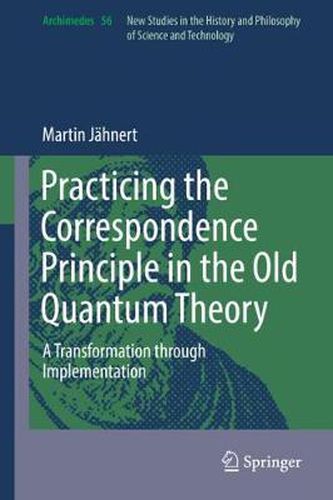Readings Newsletter
Become a Readings Member to make your shopping experience even easier.
Sign in or sign up for free!
You’re not far away from qualifying for FREE standard shipping within Australia
You’ve qualified for FREE standard shipping within Australia
The cart is loading…






This title is printed to order. This book may have been self-published. If so, we cannot guarantee the quality of the content. In the main most books will have gone through the editing process however some may not. We therefore suggest that you be aware of this before ordering this book. If in doubt check either the author or publisher’s details as we are unable to accept any returns unless they are faulty. Please contact us if you have any questions.
This book presents a history of the correspondence principle from a new perspective. The author provides a unique exploration of the relation between the practice of theory and conceptual development in physics. In the process, he argues for a new understanding of the history of the old quantum theory and the emergence of quantum mechanics.
The analysis looks at how the correspondence principle was disseminated and how the principle was applied as a research tool during the 1920s. It provides new insights into the interaction between theoretical tools and scientific problems and shows that the use of this theoretical tool changed the tool itself in a process of transformation through implementation. This process, the author claims, was responsible for the conceptual development of the correspondence principle.
This monograph connects to the vast literature in the history of science, which analyzed theoretical practices as based on tacit knowledge, skills, and calculation techniques. It contributes to the historical understanding of quantum physics and the emergence of quantum mechanics. Studying how physicists used a set of tools to solve problems, the author spells out the skillful guessing that went into the making of quantum theoretical arguments and argues that the integration and implementation of technical resources was a central driving force for the conceptual and theoretical transformation in the old quantum theory.
$9.00 standard shipping within Australia
FREE standard shipping within Australia for orders over $100.00
Express & International shipping calculated at checkout
This title is printed to order. This book may have been self-published. If so, we cannot guarantee the quality of the content. In the main most books will have gone through the editing process however some may not. We therefore suggest that you be aware of this before ordering this book. If in doubt check either the author or publisher’s details as we are unable to accept any returns unless they are faulty. Please contact us if you have any questions.
This book presents a history of the correspondence principle from a new perspective. The author provides a unique exploration of the relation between the practice of theory and conceptual development in physics. In the process, he argues for a new understanding of the history of the old quantum theory and the emergence of quantum mechanics.
The analysis looks at how the correspondence principle was disseminated and how the principle was applied as a research tool during the 1920s. It provides new insights into the interaction between theoretical tools and scientific problems and shows that the use of this theoretical tool changed the tool itself in a process of transformation through implementation. This process, the author claims, was responsible for the conceptual development of the correspondence principle.
This monograph connects to the vast literature in the history of science, which analyzed theoretical practices as based on tacit knowledge, skills, and calculation techniques. It contributes to the historical understanding of quantum physics and the emergence of quantum mechanics. Studying how physicists used a set of tools to solve problems, the author spells out the skillful guessing that went into the making of quantum theoretical arguments and argues that the integration and implementation of technical resources was a central driving force for the conceptual and theoretical transformation in the old quantum theory.